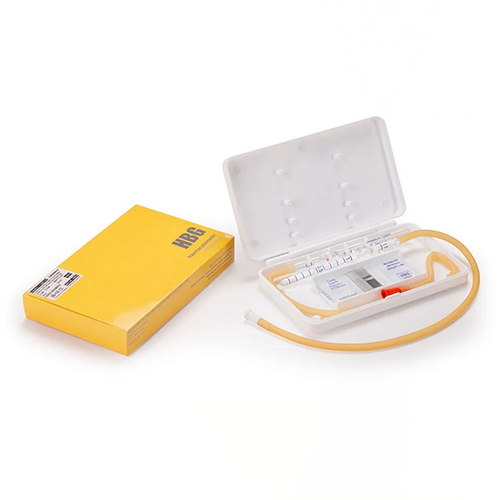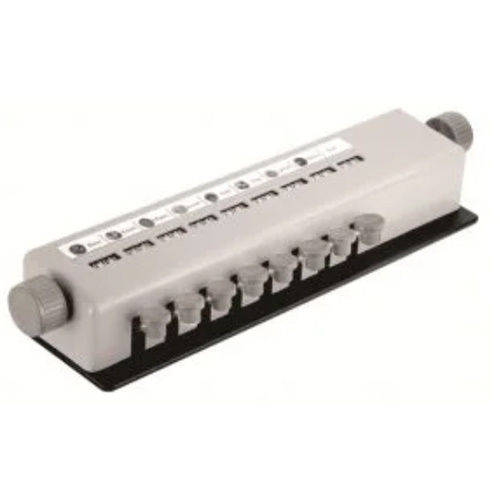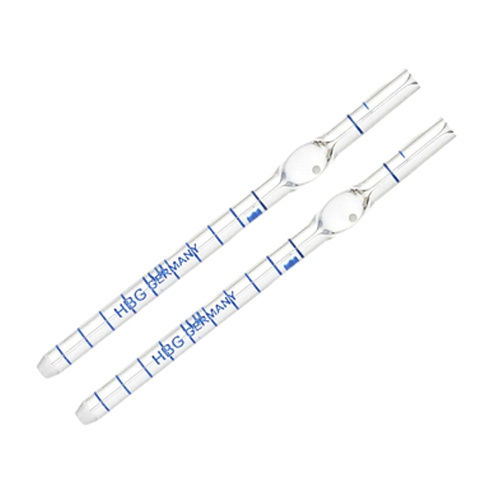Haemocytometer Set with BL Chamber
Haemocytometer Set with BL Chamber Specification
- Size
- Different available
- Color
- White
- Equipment Materials
- Plastic
- Application
- Industrial
- Warranty
- Yes
Haemocytometer Set with BL Chamber Trade Information
- Minimum Order Quantity
- 1 Unit
- Supply Ability
- 100 Units Per Month
- Delivery Time
- 7 Days
- Packaging Details
- KD-6 MIG Flats Pitampura Delhi 110034 Royal India
- Main Domestic Market
- All India
About Haemocytometer Set with BL Chamber
The HBG hemocytometer is a counting-chamber device originally designed and usually used for counting blood cells, hemocytometer was invented by Louis-Charles Malassez and consists of a thick glass microscope slide with a rectangular indentation that creates a precision volume chamber.
This instrument is used for visual counting of the number of cells in a Blood sample or other fluid under a microscope. The device is carefully crafted so that the area bounded by the lines is known, and the depth of the chamber is also known. By observing a defined area of the grid, it is, therefore, possible to count the number of cells or particles in a specific volume of fluid and thereby calculate the concentration of cells in the fluid overall. A well-used type of hemocytometer is the Neubauer counting chamber. Other types of hemocytometers with different rulings are in use for different applications. Fuchs-Rosenthal rulings, commonly used for spinal fluid counting, Howard Mold rulings used for mold on food and food packaging products, McMaster Egg Slide ruling used for counting microbial eggs in fecal material, Nageotte Chamber ruling for counting low levels of white cells in white cell-reduced platelet components, Palmer Nanoplankton ruling for counting smaller plankters. Petroff-Hausser counter using Improved Neubauer rulings is used for bacteria & sperm counts & is offered with varying chamber depths. The Sedgwick-Rafter Cell ruling in a hemocytometer is primarily designed for use in the microscopy of drinking water.


Price:
- 50
- 100
- 200
- 250
- 500
- 1000+
More Products in HBG Pathological Instruments Category
Pulse Oximeter
Price 950.0 INR / Piece
Minimum Order Quantity : 1 Piece
Size : Standard
Color : Blue
Material : Glass
Usage : Chemical Laboratory
9 kEYS Blood Cell Counter
Price 1800.0 INR / Piece
Minimum Order Quantity : 10 Pieces
Size : Standard
Color : Any Color
Material : PVC
Usage : Chemical Laboratory
Round Tube
Price 150 INR / Piece
Minimum Order Quantity : 10 Pieces
Size : Standard
Color : Transparent
Material : Glass
Usage : Chemical Laboratory
WBC Pipette Pump-Borosilicate Glass
Price 220 INR / Piece
Minimum Order Quantity : 10 Pieces
Size : Standard
Color : Transparent
Material : Borosilicate Glass
Usage : Chemical Laboratory









 Send Inquiry
Send Inquiry Call Me Free
Call Me Free